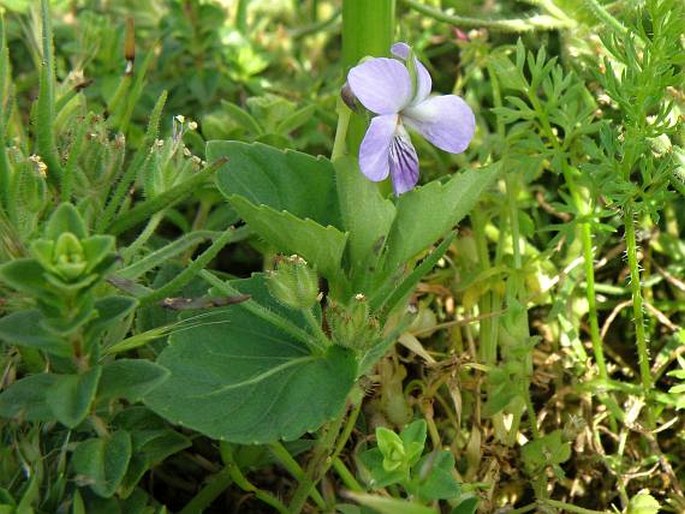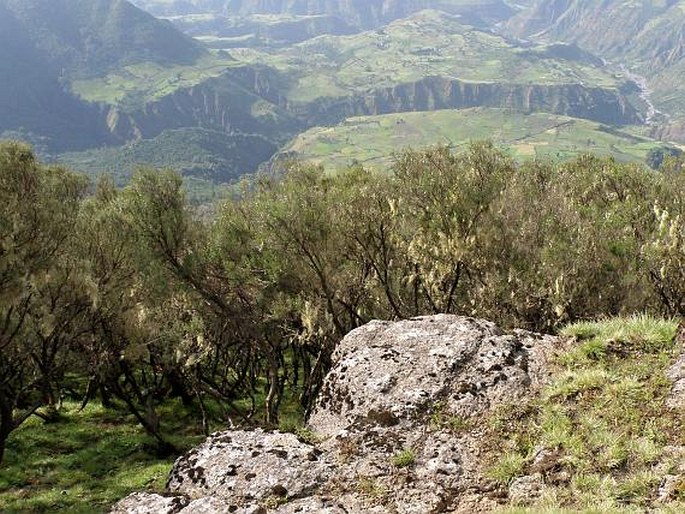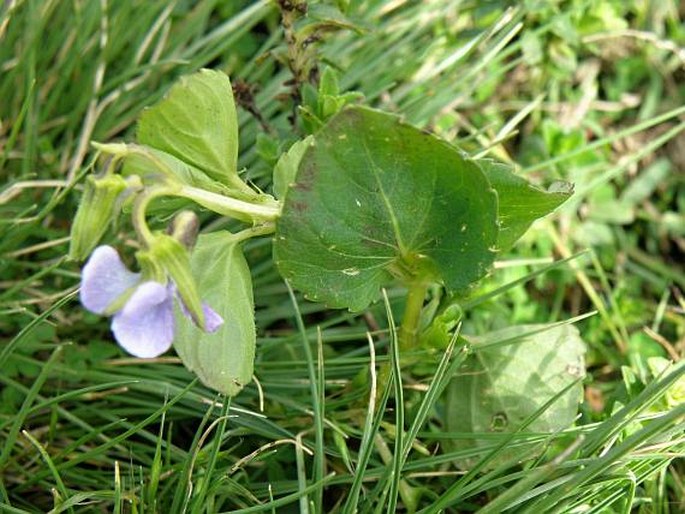Syn.: Viola emirnensis Bojer, Viola zongia Tul.
Family: Violaceae Batsch

Distribution: Mountains of Sub-Saharan Africa. This species is distributed in eastern part of continent, from Eritrea to the Republic of South Africa, smaller area lies in Nigeria, Cameroon and Bioko Is. Some localities are known from Madagascar. There are only 3 species in the Tropical East Africa: Viola nannae is distinguished by rounded to attenuate leaf base, Viola eminii by short basal appendages on sepals and reniform to suborbicular leaves.
Ecology: Moist grasslands, open mountain forests, in altitudes 100–3700 m a. s. l.

Description: Perennial herb with creeping, up to 60 cm long stems, rooting at the nodes. Leaves petiolate, petiole 4–32 mm long; lamina broadly ovate to suborbicular, 0,9–3,2 cm long and 0,7–2,8 cm broad, cordate at the base, margin crenate-dentate, rounded or apiculate at the apex, rather hairless above, hairy below; stipules ovate to linear-lanceolate. Flowers solitary in the leaf axils; pedicel 1–4 cm long, with two bracteoles in the upper part; sepals linear to lanceolate, unequal, appedages absent; petals only slightly exceeding sepals, mauvish or bluish-violet, paler towards the base, spur 2–3 mm long; anthers sessile; ovary globose, glabrous. Capsule ovoid, 4–6 mm long, acute, glabrous.


These images were taken in Ethiopia, Simien Mountains NP, Sankaber (October 28, 2013).


